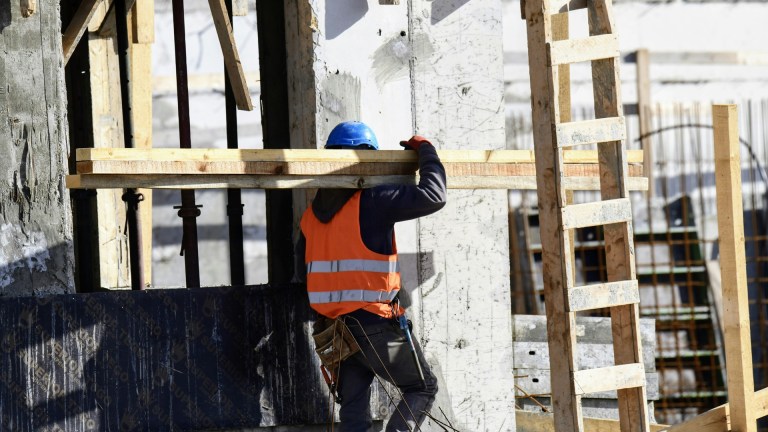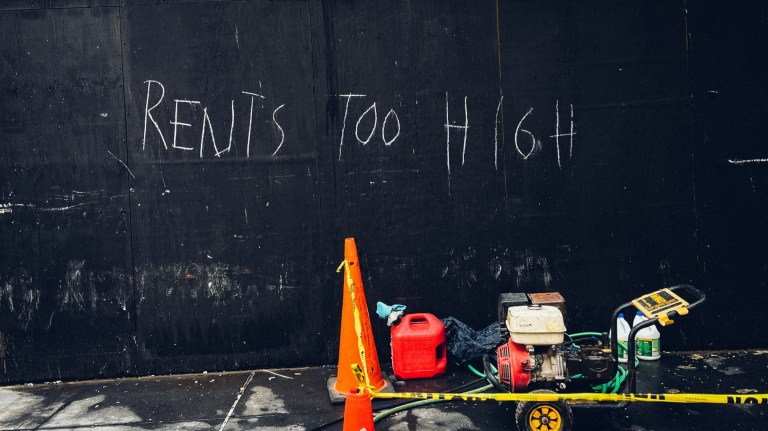That means that the average number of enquiries for a typical property has fallen to 11 while almost a quarter of rental homes on the market are now seeing their price reduced before they are let out.
But despite the slowing pace of growth, renters are still contending with rising rents. Outside of London, rents rose 3.9% in the last year – the lowest annual figure since 2020. In London, the advertised rents rose by 0.5% in the most recent quarter.
Ben Twomey, chief executive of Generation Rent, said that rents are already at unaffordable rates for many tenants and called for the government to intervene and cap rents.
“Everyone needs a safe, secure and affordable home. But renters are struggling to stay in our homes as prices soar well beyond our wages,” said Twomey.
“Landlords often blame rising rents on demand being higher than the number of homes available, but it is now clear that high rents are here to stay, even as the number of renters looking for homes is falling.
“When so much of our income is swallowed up by landlords, it can mean that we can’t afford to heat our homes for the winter or feed ourselves properly. Some renters are staring down the barrel of debt and homelessness.”
Advertising helps fund Big Issue’s mission to end poverty
StepChange Debt Charity’s chief client officer Richard Lane also called for action to support renters and said that housing costs have been a key driver of problem debt for its clients over the past five years, particularly when faced with other cost of living pressures.
Labour’s Renters’ Rights Bill finished its journey through the House of Lords last week and is set to be granted royal assent when MPs return to parliament in the autumn.
But while it gives renters more security, it does little to tackle the affordability of renting.
Lane said that tenants need more support. He revealed that a third of StepChange’s clients receiving support for debts are private renters.
Housing costs take up 37% of private renters’ incomes on average, he added, compared to 29% for social renters and 27% among mortgage holders.
Read more:
Advertising helps fund Big Issue’s mission to end poverty
“When so much of your income goes on rent, it’s no wonder private renters are more exposed to debt and financial hardship,” said Lane.
“Private sector rents continuing to outpace inflation is a clear sign that the root of the crisis goes beyond the scope of the Renters’ Rights Bill. We welcome the changes the bill brings forward to balance rights between landlord and tenant, including an end to section 21 ‘no fault’ evictions. However, tackling the lack of affordability in the PRS must be a key priority for this government in order to secure a better deal for private renters.”
There have been warnings from landlord and letting agent lobby groups that the Renters’ Rights Bill will see a number of landlords sell their property and exit the market, potentially pushing up rents and increasing homelessness.
Conservative peers also argued the point during the Renters’ Rights Bill’s final debate in the Lords.
Megan Eighteen, president of property sector body ARLA Propertymark, said that landlords are facing higher costs and pondering selling up.
“Many landlords within the private rental market are grappling with substantial hikes in their overall costs, including increased taxes, unfavourable mortgage rates, and ongoing regulatory challenges. These factors are making property investment less appealing and potentially riskier. Consequently, this is exacerbating the disparity between supply and demand for housing, and we’ve seen a significant impact on rental prices, which vary regionally.
Advertising helps fund Big Issue’s mission to end poverty
“It is clear to see that many landlords may now be struggling to justify their current or future property investments, especially if costs and the number of regulations continue to rise. It is crucial for all governments across the UK to recognise the vital role the private rented sector plays in accommodating the nation’s housing needs and provide urgent support to enhance the supply of homes while effectively lowering rent levels in the long term.”
But the prospect of an exodus was disputed in Rightmove’s Rental Price Tracker. Rightmove noted that the latest snapshot of buy-to-let lending from UK Finance shows that there has been a 17% increase in total number of loans to property investors, including a 28% uplift for new rental home purchases
Rightmove’s Colleen Babcock said: “The good news is that the latest industry snapshot suggests more investors are taking out buy-to-let loans compared with last year, which should help to bring even more homes to the rental market.”
Do you have a story to tell or opinions to share about this? Get in touch and tell us more.





